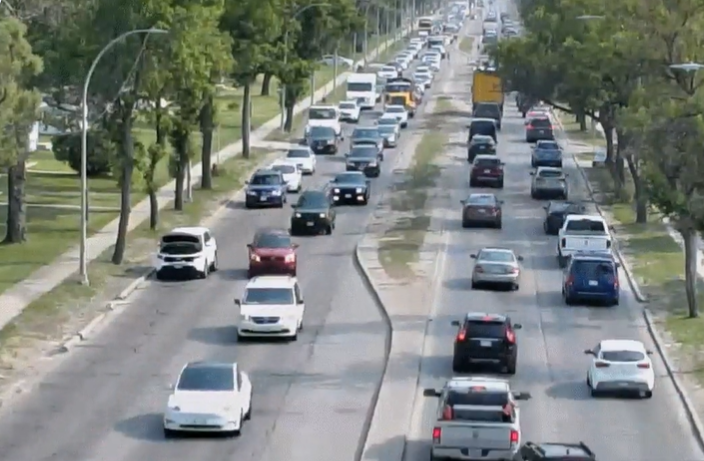The debate continues about the Route 90 expansion (Kenaston Boulevard) and whether it is a good investment for Winnipeg. Some arguments have been tabled to the extent that there is no use in expanding highways, or that transit would be better, or that nothing should be done Yet, none of these approaches is likely to support Winnipeg’s economic growth or make the all of the city more accessible to its residents, both present and future.
A favorite of interests seeking to stop highway construction is the theory of “induced demand,” the concern that soon the new roadway will be as congested as before. The mantra is that new capacity cannot significantly reduce congestion..” Steven Polzin, a former US Department of Transportation official wrote that induced demand is real, but that it has been oversold. Polzin writes that“the logic of induced demand has as much merit as stopping school construction to solve classroom overcrowding.”A US Department of Transportation document contended that increased traffic on an expanded road is “largely offset by” reductions in traffic along parallel routes and at other times of the day and that the regional increase in traffic“is minimal.”
Keeping traffic congestion under control is important, both for economic growth and mitigating poverty. Research at the University of Paris, and the University of North Carolina-Charlotte have shown that economic growth rises as the number of jobs that can be reached in a particular time (like 30 minutes) is greater.
In fact, international research indicates that transit provides much less access to jobs (and thus other destinations) in all of 60 metropolitan areas in Australia, New Zealand and the United States and 10 Canadian municipalities than cars. In the city of Winnipeg, cars can provide access to more than four times (more than 400%) as many jobs in 30 minutes as transit. Winnipeg rates the highest in Canada. Low-income employment is maximized when job access is maximized.
The usual utopian solution to traffic congestion is getting people out of their cars onto transit. Like most utopias, the vision is never achieved. I have personal experience on this as a three-term appointee to the Los Angeles County Transportation Commission. After introducing the motion authorizing what was to be a successfultax referendum to build a county wide rail system, I witnessed many new rail systems in the US that had little or no impact on traffic congestion. Now three additional tax referendums later and after spending about C$30 billion, Los Angeles has about 175 km of rail and additional exclusive busways. But ridership has dropped. In pre-pandemic 2019, the transit system carried 24% fewer riders than the 1985 peak, before any rail had opened. Per capita ridership was down 38%, due to the population increase.
Finally, transit is no congestion relieving panacea in world cities so often cited by proponents. Those with the most extensive transit systems typically have intense traffic congestion, worse than Winnipeg. According to the 2022 Tom Tom Traffic Index, Winnipeg has the 75 the worst traffic congestion out of 390 world cities. Cities with much more comprehensive transit systems, such as Tokyo, Osaka, Paris, London, Mexico City, Zurich and others have worse congestion than Winnipeg. Out of the 12 rated Canadian cities, only Toronto and Vancouver have worse traffic congestion than Winnipeg.
In the US, despite its more extensive car use, only three cities have worse traffic congestion than Winnipeg — New York, Chicago and San Francisco, but not Los Angeles. The Tom Tom Traffic Index rates Winnipeg as being twice as congested as other cities in its population category, such as Tulsa (Oklahoma), Utrecht (Netherlands), Dayton (Ohio) and Albany (New York). It seems clear that Winnipeg needs roadway expansion.
In the final analysis, the issue is not induced demand, transit or even traffic congestion. It is facilitation of quicker access for more people to destinations in the city, by whatever means. It is indisputable that a six lane roadway has greater capacity than one with four lanes, all things being equal. This means more people will be able to reach more jobs, more shopping and other opportunities over a broader geographical area. Shortening travel times for more people would be good for the economies of Winnipeg and Manitoba and greater roadway capacity can do that.
Wendell Cox is a senior fellow at the Frontier Centre for Public Policy and author of the Demographia International Housing Affordability Index. Wendell Cox can be seen on Leaders on the Frontier here.



